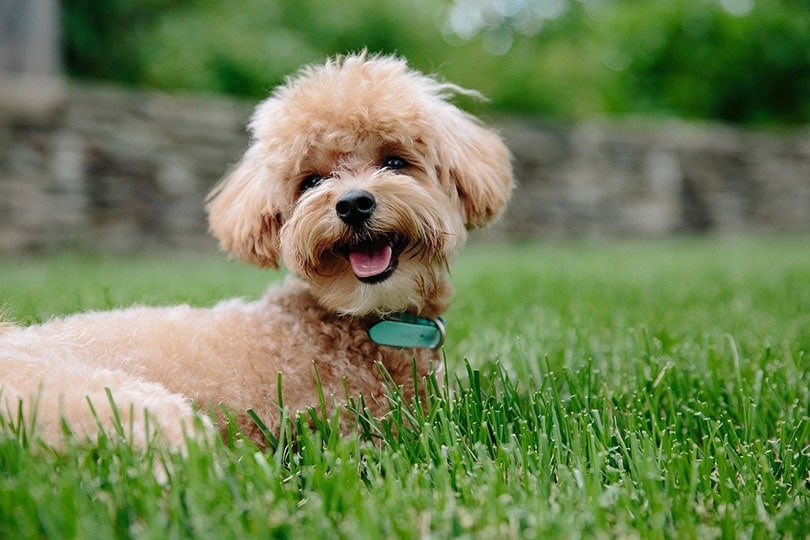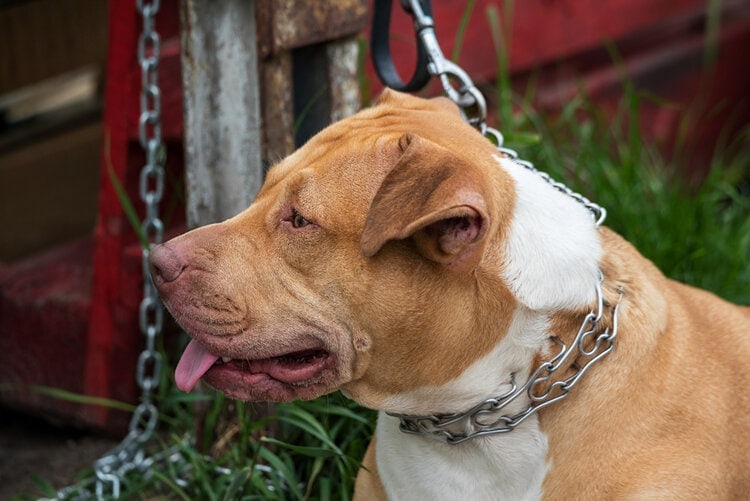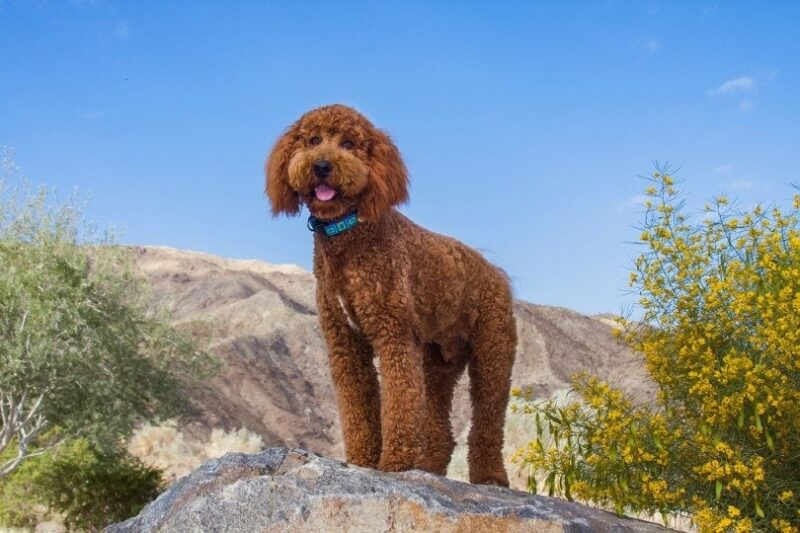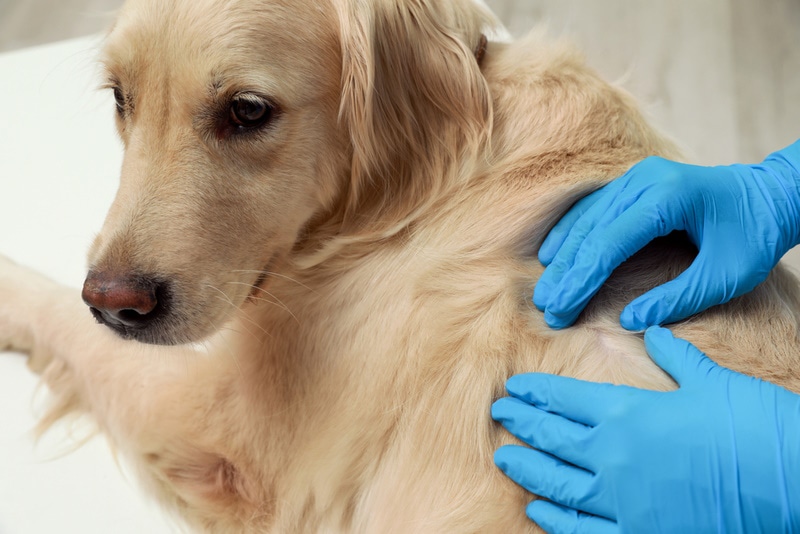Do Dogs Like Collars? Canine Preferences Explained
Updated on

A dog and a collar go together like peanut butter and jelly. So, when you have a dog that doesn’t like their collar, you might have a small problem. Most dog owners understand the importance of collars. After all, they’re not just fashionable accessories for walks; they help identify your pet should they escape.
Most dogs don’t mind collars, especially when they associate them with something fun. Every canine is different, though, so you’ll occasionally have a pup that despises wearing one. This post explores why some dogs hate collars and what you can do if your dog is one of them.
 Should Dogs Wear Collars All the Time?
Should Dogs Wear Collars All the Time?
Whether your dog wears a collar at home is up to you and your pet’s personality. Dogs don’t have to wear collars all the time, but they should still wear them, especially when in situations concerning their safety. For example, some dogs like to bolt out the door when they get excited. Other dogs have a knack for escaping the backyard. In these situations, leaving a collar on your dog is wise.
However, there are times when leaving the collar off is a good thing. There are certain risks with collars, some of which are severe, like strangulation. Other risks are mild, such as skin irritation.1 Taking their collar off once in a while can help avoid these risks.

How Do Dogs Feel When You Take Off Their Collar?
How your dog feels when the collar is removed depends on the individual. They could feel relief or dread, depending on their association with the collar. Usually, dogs will feel some relief and may get the zoomies. Collars can be itchy, so removing the collar allows them to scratch and feel a sense of freedom.
A dog’s scent is prominent on their collar, so some dogs like to lick the collar after it’s removed. It’s a way of showing that the collar is theirs. Canines can also act similarly to babies and put everything in their mouths to investigate. The collar, no doubt, has some interesting flavors from resting on your dog’s neck.
Your dog could also be a goofball and want to have some fun. Dogs often learn through association, repetition, and consistency. If taking the collar off means it’s time for something enjoyable, your pet will show that with their behavior.
What to Do If Your Dog Hates Their Collar
A dog that doesn’t like their collar might have had a negative past experience, so you’ll need to find new ideas for positive reinforcement. Let’s look at a few ways to accomplish this.

Timing When to Put on the Collar
Putting on your dog’s collar is 50% how you react and 50% how your dog reacts. You don’t want to turn it into a bad experience and force the collar on your dog, only to then get upset when they refuse to wear it. Try to remain calm and relaxed when putting the collar on.
Positive Reinforcement
Dogs love taking walks, so it won’t take long until your pup associates the collar and leash with a fun activity. But if your dog had a previous bad experience with a collar, creating a positive association could take some time. Still, it’s not impossible.
- Step 1: Every time you bring the collar out, give your dog a treat. Repeat this until your dog associates the collar with food.
- Step 2: Sit down with your dog, the collar, and a bag of treats. Whenever your dog touches the collar or comes near the collar, offer a treat.
- Step 3: Hold the collar above your dog’s head. Reward your dog if they remain calm or try to stick their nose in the loop.
- Step 4: Try putting the collar on your dog. Stay calm and offer a treat. If your dog allows you to put the collar on, give them a treat and some praise.
- Step 5: Leave the collar on for 5 minutes. Do something your dog loves to distract them from focusing on the collar. After the 5 minutes are up, remove the collar. Repeat these steps until your dog is comfortable with the collar.
Distraction
This is a perfect opportunity to use treat-dispensing toys to distract your dog, like a Kong toy or food puzzle. You can also play with your dog. Do anything necessary to distract your dog from the collar, but make sure the distraction is fun or tasty!

Try Different Collars
Not all collars are created equal. Some collars are casual, while others are for specific uses, like training. For example, the Martingale collar is designed for training dogs not to pull. It also prevents certain dogs from slipping out of the collar. This is an excellent collar, but it should never be worn without supervision since the dog can choke. Thus, a more casual collar for everyday use is warranted. If your dog doesn’t like the collar you chose, try a new one made from different materials.
Tips for Buying a Dog Collar
Choosing the best dog collar is a challenge because there are so many types on the market. Here are our best tips for choosing the right one for your dog.
- Size Matters: Measuring your dog’s neck is the first step to buying a collar. Measure the neck where the collar would normally sit, and ensure that two of your fingers can fit underneath the measuring tape.
- Consider Future Activities: Do you want to go hiking or camping with your dog? Or is your dog an indoor pet? Think about what you want to do with your pup. The collar you choose should be based on these future activities.
- Consider Materials: Common collar materials include nylon, polyester, leather, and plastic. Some are stronger than others, so think about how durable a material needs to be for your dog’s breed.
- Remember the Two-Finger Rule: Your dog’s collar should be loose enough to fit your index and middle finger between the collar and your dog’s neck. If you can’t do this, the collar is too tight.
 Final Thoughts
Final Thoughts
Most dogs don’t mind their collars, but that doesn’t mean they won’t enjoy a moment of freedom every now and then. Your dog doesn’t have to wear a collar 24/7, but they should always have a collar on when safety is a concern.
We understand how frustrating it is if your dog doesn’t want to wear a collar. Remember that positive association, repetition, and consistency are key. Follow these tips if your dog isn’t keen on wearing their collar. Most importantly, have patience for your canine friend while they adjust.
See Also:
Featured Image Credit: carah_, Pixabay
 Should Dogs Wear Collars All the Time?
Should Dogs Wear Collars All the Time?











